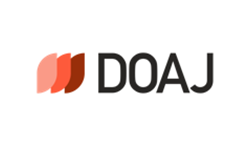РОЗУМІННЯ АСИМЕТРІЙ ЄВЕС ТА ЇХ ЕКОНОМІЧНО-ПОЛІТИЧНІ НАСЛІДКИ
Ключові слова:
Асиметрія, демократія, економічна криза, економічна та інституційна інтеграція, Європа, Архітектура ЄВЕС, Єврозона, податково-бюджетна політика, політичний союз.Анотація
Надзвичайна ситуація, спричинена Covid-19, робить ще більш очевидною серйозність невирішених політичних та економічних питань, що виникли під час європейської суверенної боргової кризи. Сьогодні необхідно відповідати на питання, пов’язані з крихкістю архітектури ЄВЕС. Чому ЄВЕС був створений з асиметричною структурою? Яка роль архітектури ЄВЕС та європейської політики під час кризи? Чи загрожує асиметрія ЄВЕС подальшому існуванню Єврозони? Процес європейської інтеграції відбувався на основі дозвільного консенсусу, визначеного очікуванням успішних економічних результатів, без справжньої демократичної легітимності. За таких умов фіскальний та політичний союз був неможливим. ЄВЕС виявився конкурентною ареною, в рамках якої було важко керувати економічними та політичними асиметріями. Аналіз цих асиметрій дає змогу зробити висновки щодо ризиків, пов’язаних з подальшою економічною та інституційною інтеграцією.
Класифікація за JEL: F15, O52, P16.
Посилання
Alesina, A., Blanchard, O., Galì, J., Giavazzi, F., & Uhlig, H. (2001). Defining a Macroeconomic Framework for the Euro Area. Monitoring the European Central Bank, Vol.3. Centre for Economic Policy Research.
Alesina, A. & Perotti, R. (1998). Economic risk and political risk in fiscal unions. The Economic Journal, 108(449), 989–1008.
Alesina, A., Tabellini, G., & Trebbi, F. (2017). Is Europe an optimal political area? (No. w23325). National Bureau of Economic Research..
Baldwin, R., & Wyplosz, C. (2009). The Economics of European Integration. McGraw-Hill.
Beetsma, R. M. W. J., & Bovenberg, A. L. (2001). The optimality of a monetary union without a fiscal union. Journal of Money, Credit and Banking, 33(2), 179–204.
Bialasiewicz, L. (2020, July 13). National stereotypes in times of COVID-19: The «rugal four» and the «irresponsible South». openDemocracy. https://www.opendemocracy.net/en/can-europe-make-it/national-stereotypesin-times-of-covid-19-the-frugal-four-and-the-irresponsible-south/
Bickerton, C. J., Hodson, D., & Puetter, U. (2015). The new intergovernmentalism: European integration in the post-Maastricht era. Journal of Common Market Studies, 53(4), 703–722.
Bishop, G. (2011). EU Fiscal Crisis: Forcing Eurozone Political Union in 2011? Searching Finance.
Breuss, F. (2000). Flexibility, fiscal policy and stability and growth pact. In Fourth ECSA-World Conference (pp. 98-126).
Cerutti, F. (2008). Why political identity and legitimacy matter in the European Union. In F. Cerutti & S. Lucarelli (Eds.), The search for a European identity: Values, policies and legitimacy of the European Union (pp. 3–22). Routledge.
Closa, C. (2007). Why convene referendums? Explaining choices in EU constitutional politics. Journal of European Public Policy, 14(8), 1311–1332.
Connolly, B. (1995). The rotten heart of Europe. The dirty war for Europe’s money. Faber & Faber.
Dan, H. (2014). The euro zone–between fiscal heterogeneity and monetary unity. Transylvanian Review of Administrative Sciences, 43, 68–84.
Darvas, Z. (2010). The case for reforming euro area entry criteria. Society and Economy, 32(2), 195–219.
Darvas, Z., Martin, P., & Ragot, X. (2018). European fiscal rules require a major overhaul. Notes du conseil danalyse economique, 2, 1–12.
Delors Committee – Committee for the Study of Economic and Monetary Union (1989). Report on Economic and Monetary Union in the European Community. Office for Official Publications of the European Communities.
Duff, A. (2011). Federal Union Now. Federal Trust for Education and Research.
Dyson, K., & Maes, I. (2016). Architects of the Euro: Intellectuals in the Making of European Monetary Union. Oxford University Press.
Eichacker, N. (2017). Financial Underpinnings of Europe’s Financial Crisis: Liberalization, Integration, and Asymmetric State Power. Edward Elgar Publishing.
Farina, F. (2020, April 30). Solidarity in Europe, in what sense? [in Italian]. Menabò di Etica ed Economia, 125.
Follesdal, A., & Hix, S. (2006). Why there is a democratic deficit in the EU: A response to Majone and Moravcsik. Journal of Common Market Studies, 44(3), 533–562.
Frankel, J. A., & Rose, A. K. (1998). The endogeneity of the optimum currency area criteria. The Economic Journal, 108(449), 1009–1025.
Giavazzi, F. Pagano, M. (1990). Can severe fiscal contractions be expansionary? Tales of two Small European countries. In O. Blanchard & F. Stanley (Eds.), NBER Macroeconomics Annual, (Vol. 5, pp. 75–111). MIT Press.
Gros, D. (2013). Foreign debt versus domestic debt in the euro area. Oxford Review of Economic Policy, (29)3, 502–517.
Guiso, L., Sapienza, P., & Zingales, L. (2016). Monnet’s error? Economic Policy, 31(86), 247–297.
Haas, J. S., D’Erman, V. J., Schulz, D. F., & Verdun, A. (2020). Economic and fiscal policy coordination after the crisis: Is the European Semester promoting more or less state intervention? Journal of European Integration, 42(3), 327–344.
Hayward, J. (2012) Union without consensus. In J. Hayward & R. Wurzel (Eds.), European disunion: Between sovereignty and solidarity (pp. 5-14). Palgrave Macmillan.
Hooghe, L. (2003). Europe divided? Élites vs. public opinion on European integration. European Union Politics, 4(3), 281–304.
Howarth, D., & Verdun, A. (2020). Economic and Monetary Union at twenty: A stocktaking of a tumultuous second decade: Introduction. Journal of European Integration, 42(3), 287–293.
Issing, O. (2002). On macroeconomic policy co-ordination in EMU. Journal of Common Market Studies, 40(2), 345–358.
Kaldor, N. (1980). Further essays on applied economics. In Collected Economic Essays of Nicholas Kaldor (Vol. 6, pp. 187–220). Wiley.
Kydland, F. E., & Prescott, E. C. (1977). Rules rather than discretion: The inconsistency of optimal plans. Journal of Political Economy, 85(3), 473–491. Lane, T. D. (1993). Market discipline. Staff Papers (International Monetary Fund), 40(1), 53–88.
Maes, I. (2002). Economic thought and the making of European Monetary Union. Edward Elgar Publishing.
Majone, G. (2005). Dilemmas of European integration: The ambiguities and pitfalls of integration by stealth. Oxford University Press.
Marsh, D. (2009). The Euro: The Politics of the New Global Currency. Yale University Press.
Masera, R. (2020). For a resilient, sustainable and inclusive recovery in Europe: Challenges and proposals in response to the pandemic crisis. Available at SSRN. http://dx.doi.org/10.2139/ssrn.3646959
Mathieu, C. & Sterdyniak, H. (2013). Do we need fiscal rules? Revue de l’OFCE, 1(127), 189–233.
McKinnon, R. (1963). Optimum currency areas. The American Economic Review, 53(4), 717–725.
Monnet, J. (1978). Mémoires (R. Mayne, Trans.). Doubleday & Company. (Original work published in 1976).
Moravcsik, A. (2002). Reassessing legitimacy in the European Union. Journal of Common Market Studies, 40(4), 603–624.
Mundell, R. (1961). A theory of optimum currency areas. The American Economic Review, 51(4), 657–665.
Neck, R., & Sturm, J.-E. (Eds.) (2008). Sustainability of Public Debt. MIT Press.
Nikolaidou, E. (2016). The role of military expenditure and arms imports in the Greek debt crisis. The Economics of Peace and Security Journal, 11(1), 18–27.
Nölke, A. (2016). Economic causes of the Eurozone crisis: The analytical contribution of Comparative Capitalism. Socio-Economic Review 14(1),141–161.
Ojala, M. (2021). Doing away with the sovereign: Neoliberalism and the promotion of market discipline in European Economic governance. New Political Economy, 26(1), 203–215.
Pasinetti, L. L. (1998a). European Union at the end of 1997: Who is within the public finance «sustainability» zone? BNL Quarterly Review, 51(204), 17–35.
Pasinetti, L. L. (1998b). The myth (or folly) of the 3% deficit/GDP Maastricht «parameter». Cambridge Journal of Economics, 22(1), 103–116.
Pérez-Caldentey, E., Vernengo, M. (2012). The euro imbalances and financial deregulation: a post-Keynesian interpretation of the European debt crisis. Levy Economics Institute of Bard College Working Paper, 702.
Priewe, J. (2018). A time bomb for the Euro? Understanding Germany’s current account surplus (No. 59). IMK Study.
Scharpf, F. W. (2011). Monetary union, fiscal crisis and the preemption of democracy. Zeitschrift für Staats-und Europawissenschaften (ZSE)/Journal for Comparative Government and European Policy, 9(2), 163–198.
Schimmelfennig, F. (2014). European integration in the Euro crisis: The limits of postfunctionalism. Journal of European Integration, 36(3), 321–337.
Schlosser, P. (2019). Europe’s New Fiscal Union. Palgrave Macmillan.
Schmidt, V. A. (2015). The Eurozone’s crisis of democratic legitimacy. Can the EU rebuild public trust and support for European economic integration? (No. 015). Directorate General Economic and Financial Affairs (DG ECFIN), European Commission.
Schönfelder, N. & Wagner, H. (2019). Institutional convergence in Europe. Economics: The Open-Access, Open-Assessment E-Journal, 13(3), 1–23.
Startin, N. & Krouwel, A. (2013). Euroscepticism re‐galvanized: The consequences of the 2005 French and Dutch rejections of the EU Constitution. Journal of Common Market Studies, 51(1), 65–84.
The Economist. (2020, March 26). How grasshoppers triumphed over ants in Europe. The old fiscal rules are no more. The Economist. https://www.economist.com/europe/2020/03/26/how-grasshoppers-triumphedover-ants-in-europe
Thompson, H. (2015). Germany and the Euro-zone crisis: The European reformation of the German banking crisis and the future of the Euro. New Political Economy 20(6), 851–870.
Tooze, A. (2020, May 25). Time to expose the reality of «debt market discipline». Social Europe. https://www.socialeurope.eu/time-to-expose-the-powerfulactors-behind-market-discipline
Truger, A. (2015). Implementing the golden rule for public investment in Europe: Safeguarding public investment and supporting the recovery. WWWforEurope Policy Paper, No. 22, WWWforEurope.
Uhlig, H. (2003). One money but many fiscal policies in Europe: What are the consequences? In M. Buti (Ed.), Monetary and fiscal policies in EMU: Interactions and сoordination (pp. 29-56). Cambridge University Press.
Vane, H. R. & Mulhearn C. (2006). Interview with Robert A. Mundell. Journal of Economic Perspectives 20(4), 89–110.
Varoufakis, Y. (2016). And the weak suffer what they must? Europe’s crisis and America’s economic future. Nation Books.
Vila, S. T. & Peters, M. (2016). The privatising industry in Europe. Issue Brief. Transnational Institute.
Weber, M. (2020, April 16). Eurobonds (or coronabonds) would not be costly fo Northern euro area countries. LSE Business Review. https://blogs.lse.ac.uk/businessreview/2020/04/16/eurobonds-or-coronabonds-would-not-be-costlyfor-northern-euro-area-countries/
Weiler, J. (2001). European democracy and the principle of constitutional tolerance: The soul of Europe. In F. Cerutti, & E. Rudolph (Eds.), A soul for Europe. On the political and cultural identity of the Europeans (vol. 1, pp. 33–54). Peeters.
Woodruff, D. M. (2016). Governing by panic: The politics of the Eurozone crisis. Politics & Society, 44(1), 81–116.
Yarovaya, L., Matkovskyy, R., & Jalan, A. (2020). The effects of a «black swan» event (COVID-19) on herding behavior in cryptocurrency markets: Evidence from cryptocurrency USD, EUR, JPY and KRW markets. Available at SSRN. https://doi.org/10.2139/ssrn.3586511
Yiangou, J., O’Keeffe, M., & Glöckler, G. (2013). ‘Tough love’: How the ECB’s monetary financing prohibition pushes deeper Euro Area integration. Journal of European Integration, 35(3), 223–237.
Zuleeg, F., & Schneider, J. D. (2015). What role for social investment in the new economic governance of the Eurozone? European Policy Centre, Policy Brief, 10.
##submission.downloads##
Опубліковано
Як цитувати
Номер
Розділ
Ліцензія
Автори, які публікуються у цьому журналі, погоджуються з наступними умовами:
- Автори залишають за собою право на авторство своєї роботи та передають журналу право першої публікації цієї роботи на умовах ліцензії Creative Commons Attribution License, котра дозволяє іншим особам вільно розповсюджувати опубліковану роботу з обов'язковим посиланням на авторів оригінальної роботи та першу публікацію роботи у цьому журналі.
- Автори мають право укладати самостійні додаткові угоди щодо неексклюзивного розповсюдження роботи у тому вигляді, в якому вона була опублікована цим журналом (наприклад, розміщувати роботу в електронному сховищі установи або публікувати у складі монографії), за умови збереження посилання на першу публікацію роботи у цьому журналі.
- Політика журналу дозволяє і заохочує розміщення авторами в мережі Інтернет (наприклад, у сховищах установ або на особистих веб-сайтах) рукопису роботи, як до подання цього рукопису до редакції, так і під час його редакційного опрацювання, оскільки це сприяє виникненню продуктивної наукової дискусії та позитивно позначається на оперативності та динаміці цитування опублікованої роботи (див. The Effect of Open Access).








